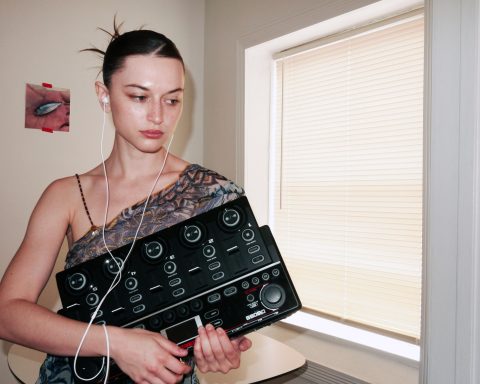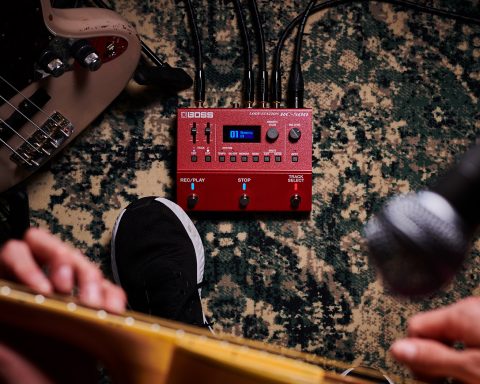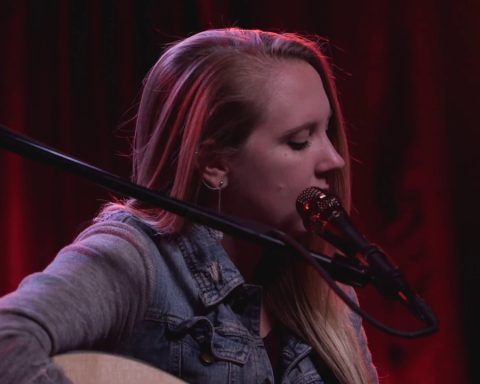This is the story of a musical flashpoint that became a cultural phenomenon. For modern musicians coming up in 2024, it’s hard to imagine a stage, studio, or livestreaming rig without the latest generation of BOSS Loop Stations. But to understand how a wildcard concept became one of the post-millennium’s gear game-changers—sparking the most exciting sounds and artists of the past quarter-century—rewind the clock to 2001. In that year, something inexplicable started happening on stages across the world. Beginning from there, explore the milestones that gave birth to a movement.
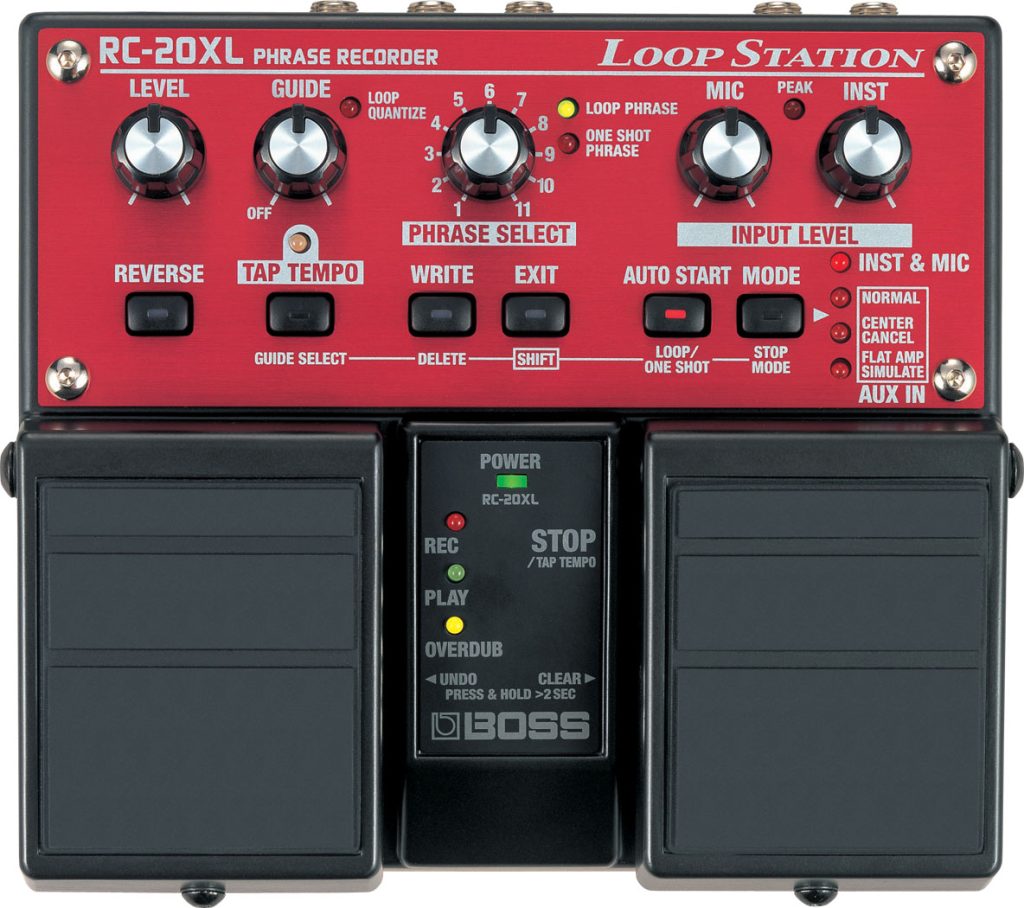
Genuine Magic
In the early aughts, witnessing a BOSS Loop Station in action for the first time felt like genuine magic. Our eyes did not deceive us: we watched a solo performer holding a single instrument or microphone. There were no backing tracks or musicians hidden in the wings. But our ears scrabbled for a logical explanation. How could a one-person strum or beatbox suddenly bloom into a symphony of sounds and textures, with cascading rhythms, riffs, beats, and vocals crashing together like waves?
Not for the first time in BOSS’s half-century history, the answer was directly under our feet. A rugged black-and-red unit released as part of the Twin Pedal Series, the original BOSS RC-20 Loop Station wasn’t a simple on/off tone-shaper. No, it was an instrument in its own right, heralding a new philosophy to music creation. The concept was as simple as the results were mind-blowing. Record a musical phrase. Play it back while layering a second phrase in real time. And repeat.
"In the early aughts, witnessing a BOSS Loop Station in action for the first time felt like genuine magic."
A Line in the Sand
We didn’t know it then, but from the viewpoint of 2024—when modern Loop Stations are feature-rich, DAW-ready studio tools used by pro bands, beatboxers, producers, and percussionists, and the subject of vigorous online communities—the RC-20 represented day one for a music scene that would never be the same again. This wasn’t just a new product. It was a line in the sand.
“Loopers opened up an entirely new way for artists to express themselves,” remembers Andreas “Pepouni” Fraefel, CEO of the Swissbeatbox platform whose members are fiercely loyal to the Loop Station range. “You had the chance to be a one-person band, which helped many artists successfully launch their careers.”
"Loopers opened up an entirely new way for artists to express themselves."
Andreas "Pepouni" Fraefel
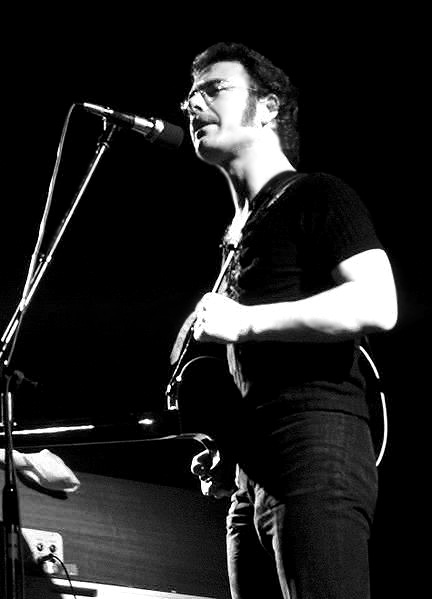
Looping Pioneers
The touchdown of the BOSS RC-20 was not without precedent. Back in 1963, some of the first tape loops had been heard on US jazzer Terry Riley’s Music For The Gift, before Robert Fripp and Brian Eno shone more light on the practice with their reel-to-reel experimentation of the ’70s (a method dubbed “Frippertronics”).
However, looping was still a dark art for pros with the means to work with glitchy and expensive equipment, not a movement you could feel on the street, enabled by affordable hardware that delivered night after night. Even when the first footswitch loopers emerged in the ’90s, the handful of pedals on sale were basic and unreliable, more likely to challenge their practitioners than elevate a live performance.
"Back in 1963, some of the first tape loops had been heard on Terry Riley’s Music For The Gift, before Robert Fripp and Brian Eno shone more light on the practice."
Loop of Faith
BOSS had already dipped a toe into digital looping by including a sample function on the acclaimed DSD delay pedals of the ’80s. But as the new millennium dawned, bringing with it a fresh wave of artists who wanted to operate under their own steam, it was clear the company had the vision and infrastructure to provide the hardware. With the RC-20, BOSS took a leap of faith, speculating that a fanbase would rise for this outlier product, whose then-unprecedented features included five-minute sampling time, overdub and real-time tempo change, AUX input, plus 11 flash memory slots to load with custom backing tracks and samples.
The bet paid off, with the nascent looping community snapping up the RC-20 and quickly demanding more. Launched in 2004, the RC-20XL upped the ante with a sixteen-minute recording capacity (and put a teenage Ed Sheeran on his road to the stadium league) before 2006’s RC-2 Loop Station shrunk the tech into a compact stompbox, and the RC-50 broadened horizons with three loop tracks.
“A couple of years back, a looper pedal was a distinctly left-field concept—then things went decidedly mainstream,” wrote MusicRadar in its review of the latter. “Other manufacturers entered the fray, but the RC-50 Loop Station is the most sophisticated all-round looper/phrase sampler available.”

"Launched in 2004, the RC-20XL upped the ante with sixteen-minute recording capacity and put a teenage Ed Sheeran on his road to the stadium league."
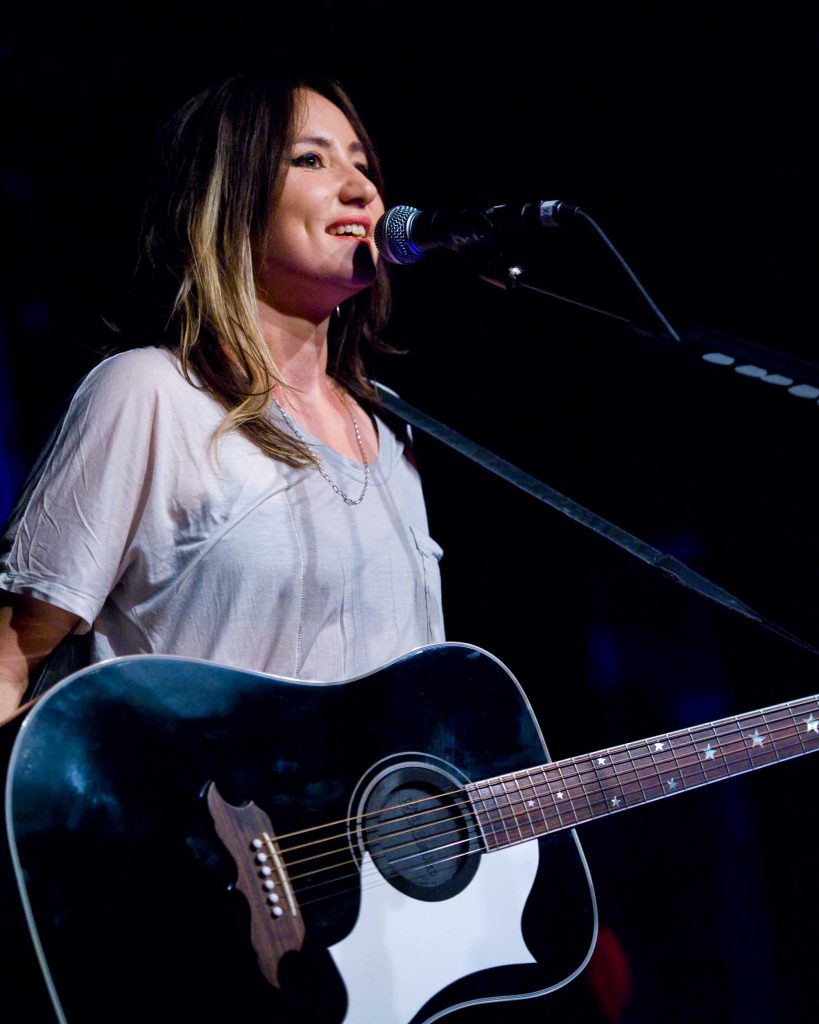
Milestones and Champions
The next milestone was in 2011. BOSS not only toasted the series’ decade anniversary but launched the inaugural Loop Station World Championships. That year’s additions included the RC-3 (which retained the practical stompbox size but added three hours of stereo recording, storage for ninety-nine loops, and USB hook-up to a computer) and bar-raising RC-30, whose two stereo tracks with dedicated faders, onboard FX, and multi-instrument inputs drew artists from Kurt Vile to KT Tunstall.
“After fifteen years of using exactly the same pedalboard, I am finally ripping it up and starting again,” posted the Scottish singer-songwriter. Tunstall shot to fame with her looped TV performance of “Black Horse And The Cherry Tree” on Later With Jools Holland. “Same idea, but using the RC-30, plus some of BOSS’s great FX pedals with beautiful big fat pads that I can trigger without even looking down!”
"Early photos of 90-million-selling pop queen Ariana Grande showed her using the RC-300."
A Grande Entrance
But perhaps most prominent from that class of 2011 was the RC-300: a triple-stereo, expression pedal-equipped road warrior that found its way into the setups of stars-in-waiting across the planet (and is still part of the current Loop Station lineup today).
Early photos of 90-million-selling pop queen Ariana Grande showed her using the RC-300, with Vevo’s creative director Ed Walker later telling Insider Magazine: “That was one of the first instruments she had as a child. She would loop her vocals to make songs up.” By 2021, Grande had graduated to the RC-505, used to thrilling effect for this multi-harmony video performance of her hit track “Positions.”
On the far side of the Atlantic, Scottish troubadour Gerry Cinnamon once told The Face how he became an RC-300 disciple. “I sold all my electric guitars, and with the money, I bought a loop pedal. I would have the place absolutely rocking.”
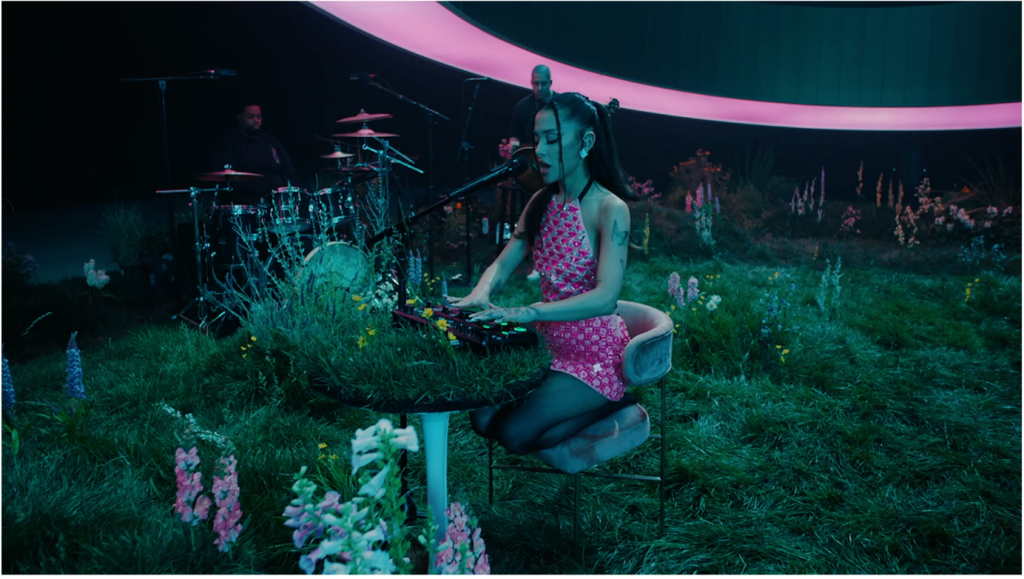
“I sold all my electric guitars, and with the money, I bought a loop pedal. I would have the place absolutely rocking."
Gerry Cinnamon
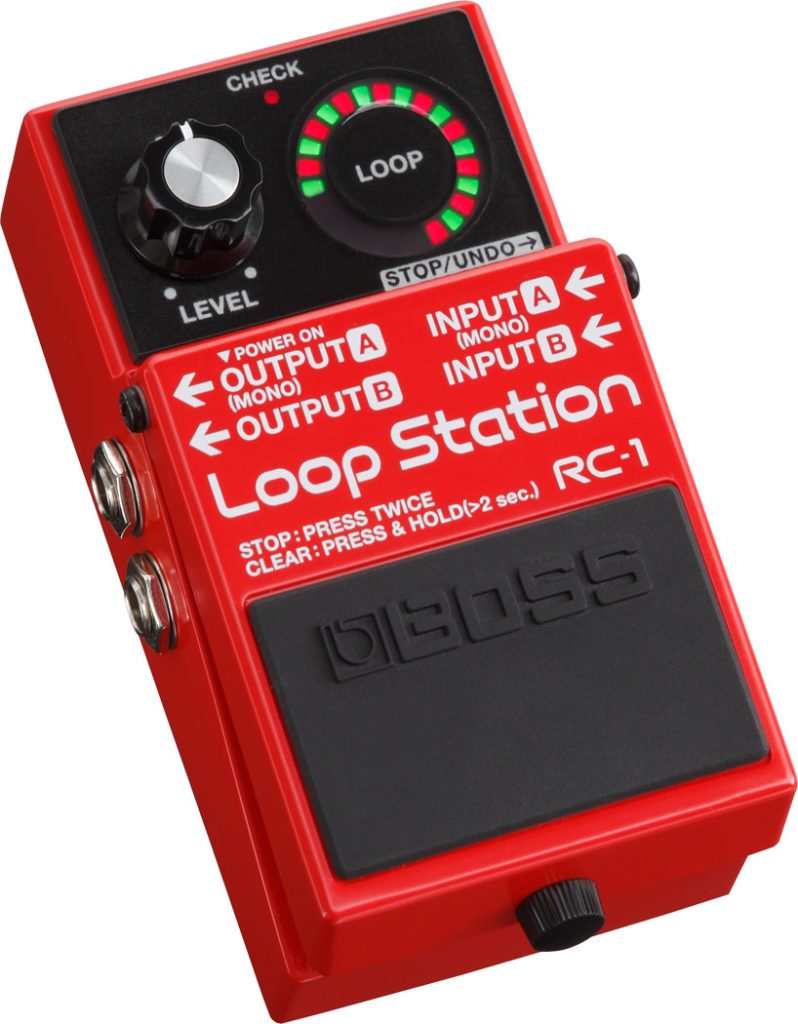
Constant Evolution
In the decade since then, the Loop Station pedal variants have remained in a constant state of evolution, with acclaimed new additions including 2014’s RC-1, which stripped the concept back to basics (and “knocked it out of the park,” according to MusicRadar), and 2019’s enduring RC-10R Rhythm Loop Station, which lets groove-minded musicians effortlessly meld two stereo phrase tracks with a built-in rhythm library boasting over 280 styles and sixteen drum kits.
The Era of the Tabletop
A seminal new era began in 2013 with the launch of the first-generation RC-505 Loop Station, its finger-on-pulse tabletop format conceived for the vocalists, producers, DJs, and beatboxers who craved hands-on control. As Pepouni says, it’s no coincidence that Swissbeatbox held its first Loop Station battle the same year the RC-505 hit the scene. “It was a game changer,” he reflects simply.
At a time when musicians were as likely to fire up a computer as sling a wood-and-wire instrument, the RC-505 also caught the zeitgeist. It introduced the notion that loopers could be the heart of a traditional amp/guitar rig and the mothership of a pro digital recording setup. With open-ended MIDI control and WAV audio import via USB, this latest Loop Station was suddenly exchanging creative juices with DAW software and outboard gear, pushing the limits of production.
"I spend lots of time designing sounds and save them as individual patches to select them on the spot and loop them live with the RC-505."
Sam Perry
A New Breed
With all bets off, a new breed of looping artists stepped up, including The Voice winner Sam Perry, who brought the concept into the world’s front rooms. “The RC-505 is the heart of my setup,” the Australian told Mixdown of his vocal approach. “It’s the latest and best Loop Station. I also use the BOSS GT-10B, a pedal built for bass guitars. I spend lots of time designing sounds and save them as individual patches to select them on the spot and loop them live with the RC-505.”
As a prolific YouTuber and recording artist, Tash Sultana had used the RC-30 in their early years. However, the RC-505 gave full voice to the ambitions of the Australian singer-songwriter known to loop up to fifteen instruments simultaneously. “If you suspect that a looper pedal is going to place too many constraints on you and over-complicate your sound,” wrote MusicRadar of Tash’s mind-expanding performances, “Sultana will divest you of it.”
As for sheer instrumental scope, we can’t overlook the work of YouTuber Reinhardt Buhr, who uses his RC-505 with everything from cello and darbuka to cajon, didgeridoo, and shofar: “It enables me to record everything on the spot.”
"However, the RC-505 gave full voice to the ambitions of Tash Sultana, who is known to loop up to fifteen instruments simultaneously."
Sam Perry
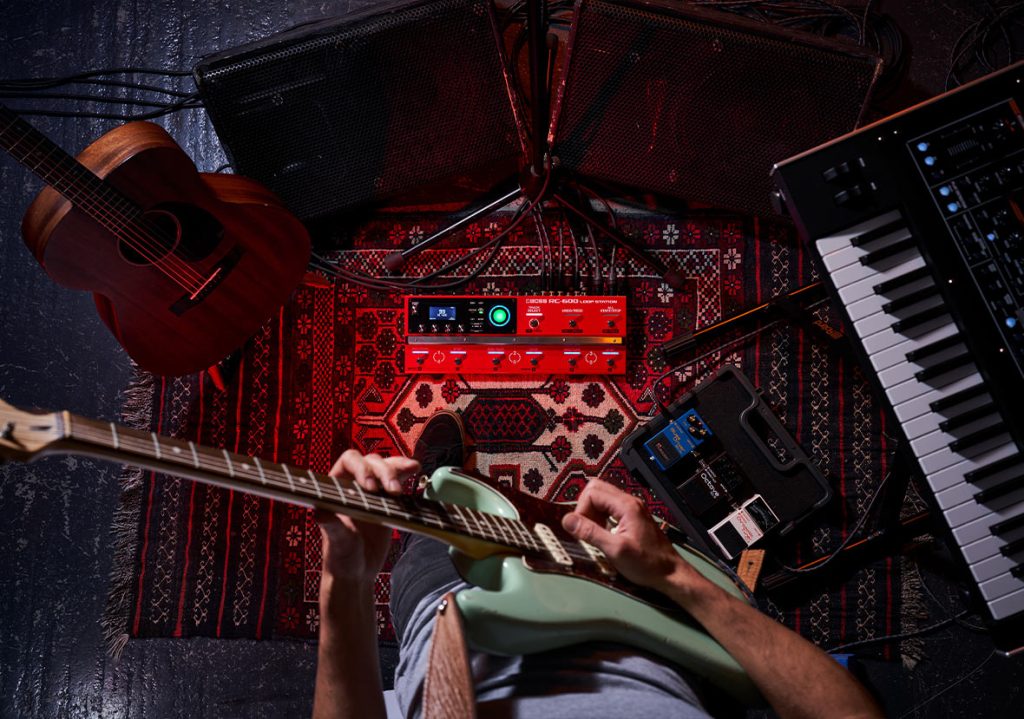

Options, Options, Options
In 2020, we welcomed the RC-5 and RC-500, offering a massive thirteen hours of recording time alongside next-level external control options. But floor-based looping took its next quantum leap with the RC-600. The unit was so powerful that a dedicated Facebook page sprang up to trade tips on features. These included six stereo tracks, premium 32-bit sound, multi-instrument support, minute control via nine assignable footswitches, and signature sound crafted via a head-spinning onboard FX selection. “Hi, family,” wrote one group member when the RC-600 dropped. “I’m just moving from my old loopers to this mindblowing machine. How many options?!”
If the RC-600 was a new face, that same year saw the return of an old friend, now transformed with supercharged capabilities. The RC-505mkII currently sets the standard with its five dedicated phase tracks, 49 Input FX types, 53 Track FX types, 99 memories, custom effects, and playback settings, not to mention twin XLR mic inputs with phantom power. There’s nothing it cannot do.
"The day when the RC-505mkII arrived, I locked myself in my room with it for three hours, just trying to discover all the new things within it.”
Josh O
Beatbox Loyalty
The loyal beatbox community immediately adopted this new variant alongside countless bands and producers (check out this ambitious video by mysterious UK beats duo The Stickmen Project). In fact, on the year of its launch, scene god Rythmind used the RC-505mkII to craft his all-time banger “Back To The Underground,” while Swissbeatbox provided the ultimate pre-launch roadtest with a special SBX Kickback Battle, putting the new arrival through its paces.
“The day when the RC-505mkII arrived,” remembers the US beatboxer Josh O, “I locked myself in my room with it for three hours, just trying to discover all the new things within it.”

"It's up to the musicians on the scene to blow the infinite possibilities of the current Loop Station range wide open."

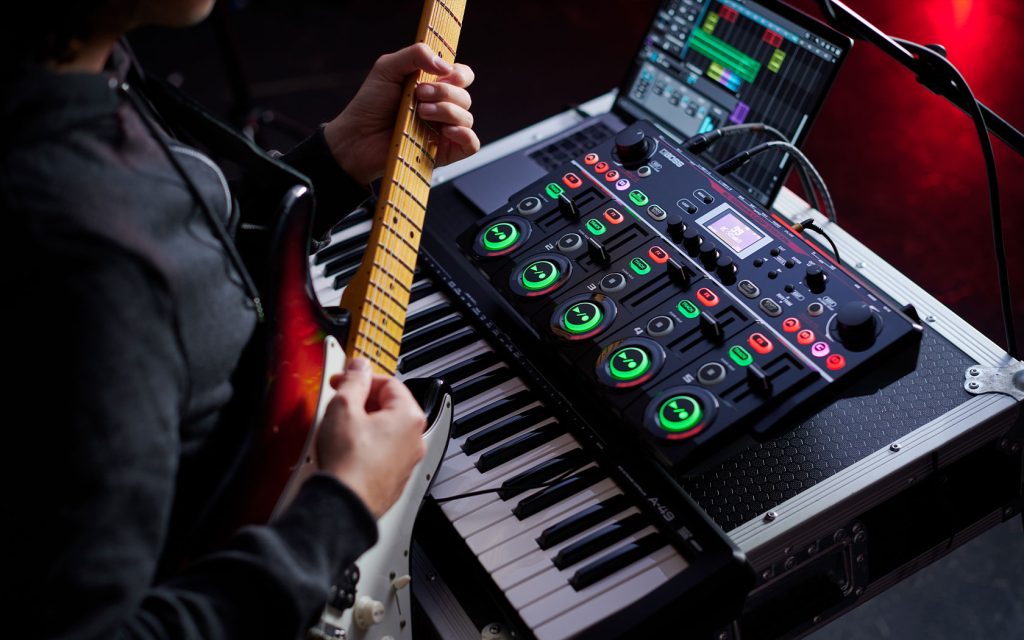
Infinite Loop
So, what does the future hold for the Loop Station? In one sense, that’s down to the engineers, designers, and dreamers working behind the scenes at BOSS to create a fresh wave of hardware. But equally, it’s also up to the musicians on the scene to blow the infinite possibilities of the current Loop Station range wide open and signpost where the series should go from here.
Ultimately, looping might have changed beyond recognition since 2001. Still, whatever happens next, we’re confident that legendary early exponent Robert Fripp’s description will always ring true: “A way for one person to make an awful lot of noise—wonderful!”


